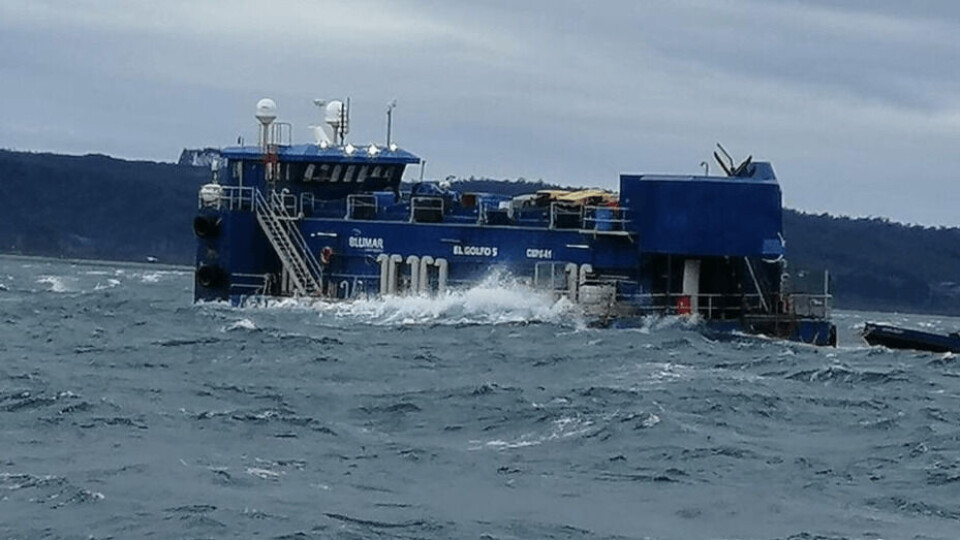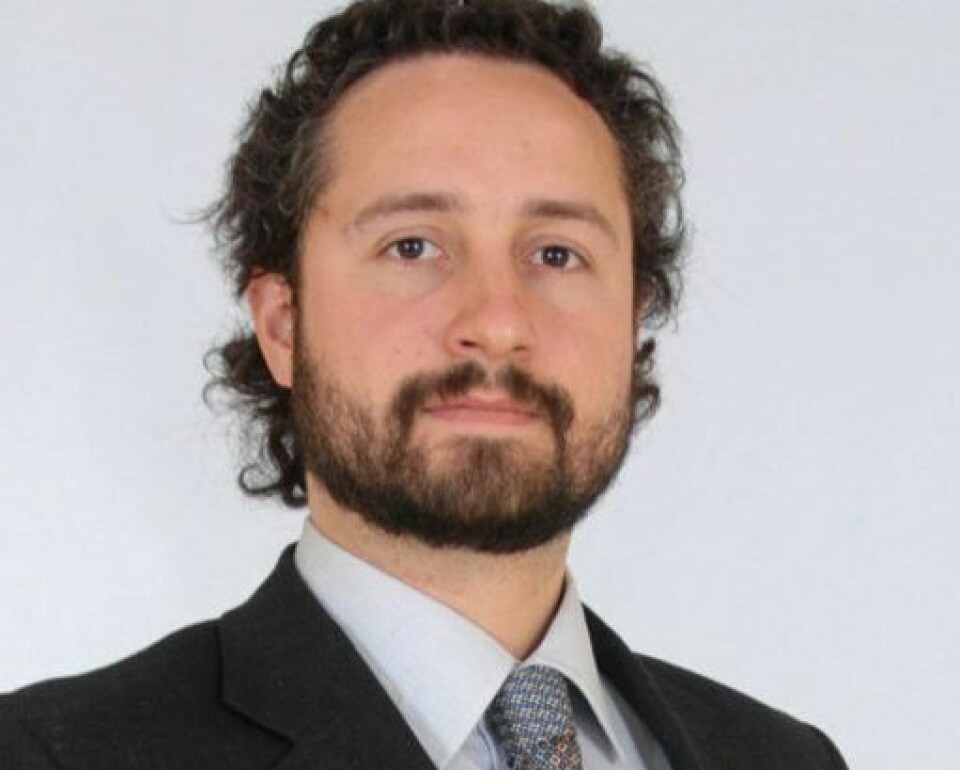
The risks of re-floating sunken Blumar farm
Plans to re-float a sunken salmon farm lying nearly 1,000 feet below the surface of the sea are being considered by Chilean authorities, which have warned of potential risks in such an operation.
Sixteen cages and 2,900 tonnes of dead salmon are lying on the seabed following the collapse of Blumar’s Caicura farm in heavy seas on June 27.
Alicia Gallardo, director of state aquaculture agency Sernapesca, said Blumar had sent it four proposals for the recovery of the sunken cages and the safe removal of the mass mortality, and that these were being risk assessed.

‘Dead areas’
Cristóbal de la Maza, head of the Superintendency of the Environment (SMA), told Fish Farming Expert’s Chilean sister site, Salmonexpert.cl, that “we are awaiting the pronouncement of the Maritime Authority in this regard” and that the process of removing the dead fish and the cages from the Caicura site will not be easy.
“There is a high risk when extracting decomposing organic matter, since pockets of hydrogen sulphide can form, which in high concentrations are fatal for people who are taking part in the work, and generate ecosystem damage if the process is not handled properly,” warned De la Maza.
Speaking about the effect of 2,900 tonnes of dead salmon on the seabed, De la Maza stated: “All that organic matter is decomposed by the action of bacteria found in the environment, which consume oxygen and begin to overpopulate the area.
“And when the food is finished, they decompose until much of the oxygen in the place is consumed, forming dead areas that could affect the other salmon farms in the surroundings by generating mass mortality in these.”
However, the SMA chief pointed out that, since the dead fish are lying nearly 1,000 feet deep, “the pressure levels of the water column on the biomass can help a lot to maintain this encapsulated effect”, although this had to be evaluated by each of the experts hired by Blumar at the demand of the authorities.
Faced with this, he said the SMA will establish a very powerful monitoring control “never before seen in Chile, which will allow us to observe any deviation in the physical and biological media linked to the Caicura centre and to know if something is happening that affects the related ecosystem, so we can take action in that case”.
“We require the company, together with the Maritime Authority, to instigate a sampling program in areas of the Reloncaví Sound that could be affected by the mass mortality, in addition to installing continuous monitoring equipment for environmental variables at the site of the event, with sensors more than 100 metres deep, and to investigate if there is potential for harmful algal blooms from this event.”
Plans being analysed
Commander Felipe González, port captain of Puerto Montt, informed Salmonexpert that Blumar sent an email with the dossier on the plan to re-float the sunken cages and to safely remove the fish. The dossier is subject to current analysis in its technical aspects, for subsequent approval or rejection.
The Maritime Authority warned that “it may be convenient to remove the structures and the mortality of salmon to avoid more contamination in the sector, or it is feasible that it not be convenient to do so, due to the eventual dispersion of contaminants, but this is not our call, but rather of the environmental enforcement entities”.
“All in all, we asked the company to monitor the state of the water column after the Caicura centre collapsed, and practically the day after the event we decided to report the company for possible environmental damage to the Bidema de Valdivia (Investigating Brigade of Crimes Against the Environment and Cultural Heritage),” stated the authority.
27% of escaped fish recaptured
Nearly 104,000 salmon with an average weight of 3.8kg are estimated to have escaped from the two cages in the 18-module unit that didn’t sink.
Blumar has recaptured more than 28,000 fish, or 27.26% of the total, well beyond the legal minimum of 10%, below which “environmental damage” is presumed to have occurred.
But SMA chief De la Maza stated: “It does not mean that there is no environmental damage, only that the presumption is eliminated.
“More than 70,000 individuals remain in the environment, of which one can expect that 25,000 individuals die of starvation and that the rest compete with local species, even eating them, with an ecosystem effect.”























































